A vehicle breakdown can happen anytime, leaving drivers stranded on the road. Roadside assistance insurance helps by covering emergency services like towing, tire changes, and jump-starts. However, coverage varies depending on the provider, which makes it important to understand what does roadside assistance cover and what it does not.
Some policies only offer basic services, while others provide more extensive help, including fuel delivery and locksmith services. Knowing the details of your coverage ensures you are not caught off guard in an emergency and helps you decide if roadside assistance is worth adding to your policy.
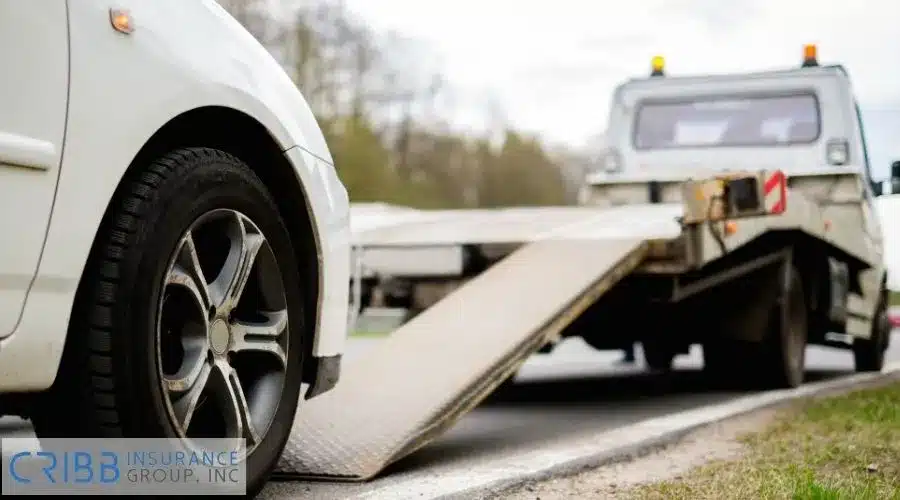
How Does Roadside Assistance Work
Roadside assistance covers breakdowns like flat tires, dead batteries, and mechanical failures. Some plans are add-ons to insurance policies, while others are standalone services. Coverage limits vary—some allow unlimited service calls, while others set a yearly limit.
Who Provides Roadside Assistance
Several providers offer roadside assistance, either as an insurance add-on or as a separate service. The main types of providers include:
- Auto Insurance Companies: Many insurers, such as Cribb Insurance Group Inc offer roadside coverage as an optional policy add-on.
- Car Manufacturers: Some automakers include roadside assistance insurance as part of a new car purchase or extended warranty.
- Credit Card Providers: Certain credit cards, such as those from Visa and American Express, offer limited roadside assistance as a cardholder benefit.
How Roadside Assistance Works
When a covered vehicle breaks down, the driver calls the provider’s roadside assistance hotline, providing their policy details and location. The provider then dispatches a service professional to assist. The process typically follows these steps:
- Call for Assistance: The driver contacts their roadside service provider and describes the issue.
- Dispatch of Service: A technician or tow truck is sent to the driver’s location.
- On-Site Repairs or Towing: The service provider will attempt to fix the issue, such as jump-starting the battery or changing a tire. If the problem cannot be resolved on-site, the vehicle is towed to the nearest repair facility.
- Service Limitations Apply: Some services, such as towing or labor costs, may have restrictions on distance, time, or the number of annual service calls.
Some roadside assistance plans allow policyholders to choose their preferred repair facility, while others require towing to the nearest authorized location. Understanding these details helps drivers make informed decisions when selecting coverage.
Services Included in Roadside Assistance
Roadside assistance provides help when a vehicle becomes inoperable due to mechanical failure, a flat tire, a dead battery, or other non-accident-related issues. Coverage varies by provider, but most roadside assistance insurance plans include essential services. Understanding what does roadside assistance cover ensures drivers know what to expect when they need help on the road.
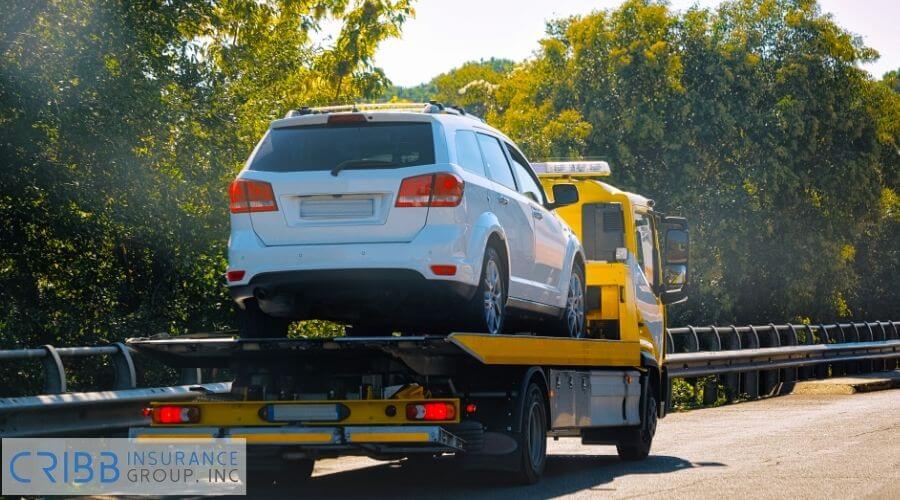
Towing and Breakdown Assistance
If a vehicle cannot be repaired on-site, roadside assistance provides towing to a nearby repair facility. The towing distance covered depends on the provider and the specific plan. Some important details to consider about towing coverage include:
- Towing Distance Limits: Many providers, including Progressive roadside assistance, cover a set mileage, such as 10 or 20 miles, before charging extra fees.
- Preferred Repair Facilities: Some roadside assistance plans allow the driver to choose a repair shop, while others only tow to the nearest authorized service center.
- Situational Towing: Coverage may differ based on whether the vehicle is broken down, stuck in a ditch, or involved in a non-collision incident.
Towing services are among the most commonly used roadside assistance benefits, making it important to check coverage details before relying on them.
Flat Tire Changes and Repairs
A flat tire can leave a driver stranded, but roadside assistance can help by sending a service provider to replace the damaged tire with a spare. Some plans also offer mobile tire repair for minor damage, but they typically do not cover the cost of a new tire. Here’s what to know about flat tire assistance:
- Spare Tire Requirement: Roadside providers will install a spare tire if one is available, but they do not bring a new tire to the scene.
- Tire Repair vs. Replacement: Some plans offer patching for small punctures, but if a tire is beyond repair, the driver is responsible for purchasing a replacement.
- Towing for Tire Issues: If the vehicle does not have a spare tire, or the damage is severe, roadside assistance may tow the vehicle to a tire shop.
Since tire issues are common, it’s essential to check whether a roadside assistance plan includes full coverage for repairs or only offers tire-changing services.
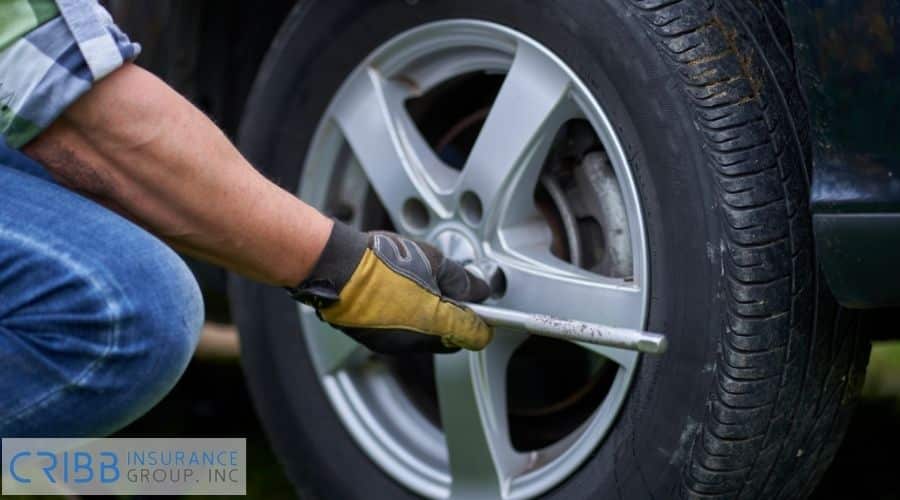
Battery Jump Starts and Replacements
A dead battery is one of the most frequent reasons drivers need roadside assistance service. Whether due to leaving headlights on or an aging battery, roadside assistance can help get the vehicle running again. Here’s what roadside assistance typically covers for battery issues:
- Jump Start Service: A technician will come to the vehicle’s location and use jumper cables or a portable battery pack to restart the car.
- Battery Diagnostics: Some providers offer a basic assessment to check if the battery is still functional or needs replacement.
- Battery Replacement Exclusions: While roadside assistance can help restart a battery, it does not cover the cost of a new one. If a battery needs replacing, the driver must purchase a new battery separately.
If a jump start does not work, roadside assistance insurance may cover towing the vehicle to a repair shop for further diagnostics and replacement.
Fuel Delivery and Lockout Services
Running out of fuel or locking keys inside a car can be frustrating, but insurance roadside assistance provides solutions for these situations. Here’s how roadside assistance helps with fuel and lockouts:
- Fuel Delivery: A provider will bring enough fuel to get the vehicle to the nearest gas station. However, the driver is responsible for paying for the fuel.
- Lockout Services: If the keys are locked inside, a technician will attempt to unlock the vehicle using specialized tools.
- Key Replacement Limitations: If the keys are lost or broken, roadside assistance may help arrange a locksmith, but the driver must cover the cost of a replacement key.
Fuel delivery and lockout assistance can prevent minor inconveniences from turning into major problems, making them valuable parts of roadside assistance insurance.
Winching and Vehicle Recovery
Vehicles that get stuck in mud, snow, or off-road areas may require winching to pull them back onto a drivable surface. Roadside assistance service often includes winching, but coverage limits apply. Important details about winching and recovery include:
- Standard Winching Coverage: Most plans cover pulling a stuck vehicle back onto the road if it is near a public roadway.
- Distance and Accessibility Limits: If a vehicle is deep in mud, sand, or snow, additional recovery fees may apply. Some providers only cover winching within 100 feet of a paved road.
- Multiple Vehicle Assistance: If multiple tow trucks or specialized equipment are needed, the driver may need to pay for the extra service.
Drivers in areas prone to heavy snowfall, off-road driving, or unpaved roads should check their roadside assistance insurance policy to ensure adequate winching coverage.
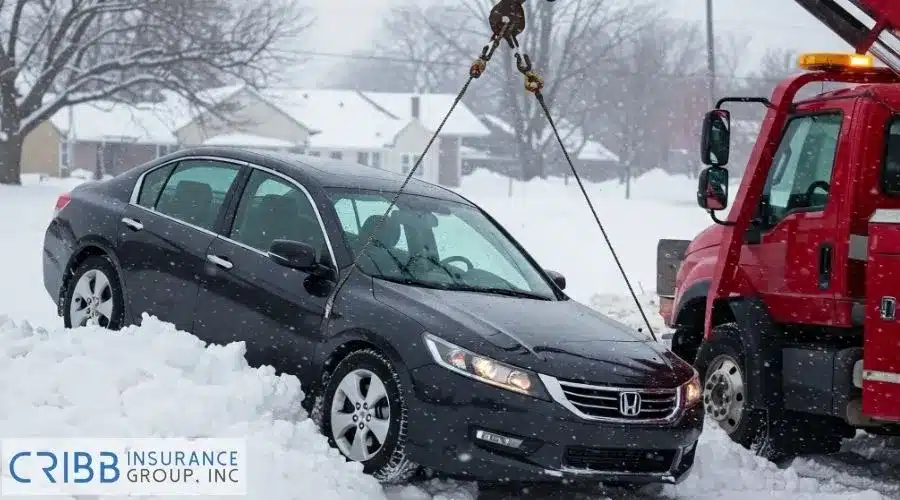
What Roadside Assistance Does Not Cover
While roadside assistance insurance helps drivers in emergencies, it does not cover every situation. Many providers have limits on towing distance, service frequency, and additional costs beyond basic assistance. Knowing what roadside assistance covers and what it does not can prevent unexpected expenses when using the service.
Distance Limits for Towing Services
Most roadside assistance service plans cover towing, but only within a specific distance. If a vehicle needs to be towed farther, the driver must pay the additional cost out of pocket. Here are key points about towing distance limits:
- Standard Coverage: Many insurance providers, including Progressive roadside assistance, cover towing within a set mileage, usually between 10 to 20 miles.
- Extra Charges for Long-Distance Tows: If a tow exceeds the covered distance, the driver must pay per mile beyond the limit. Costs vary based on location and provider.
- Repair Facility Restrictions: Some providers require towing to the nearest approved repair shop, while others allow the driver to choose a preferred location.
Understanding these limits ensures drivers know what to expect if their vehicle requires towing beyond the standard coverage.
Service Call Limits Per Year
Most insurance roadside assistance plans set a cap on the number of service calls allowed per year. Once a driver exceeds this limit, they may have to pay for additional roadside services. Important details about service call limits include:
- Common Limits: Many providers allow between three to five service calls per year, though some premium plans offer unlimited assistance.
- Overage Charges: If the driver exceeds the limit, they may have to pay full price for additional service calls. Fees vary depending on the provider.
- Usage Tracking: Some companies track frequent claims and may deny coverage if they suspect misuse of the service.
Drivers who rely on roadside assistance insurance frequently should check their policy’s annual service call limit to avoid unexpected costs.
Replacement Parts and Additional Labor Costs
While roadside assistance insurance covers labor for minor repairs, it does not include the cost of replacement parts or extensive mechanical work. If a vehicle needs new components to be operational, the driver must pay for them separately. Here are the common exclusions related to replacement parts and labor:
- Battery and Tire Costs: While roadside assistance provides a jump start or tire change, it does not cover the cost of a new battery or tire.
- Fuel Costs: Roadside assistance service delivers gas if a vehicle runs out, but the driver must pay for the fuel.
- Labor Time Limits: Many providers offer up to one hour of free labor. If repairs take longer, additional labor costs are charged at standard rates.
Drivers should confirm whether their insurance roadside assistance plan offers reimbursement for minor repairs or if they must cover all replacement part expenses out of pocket.
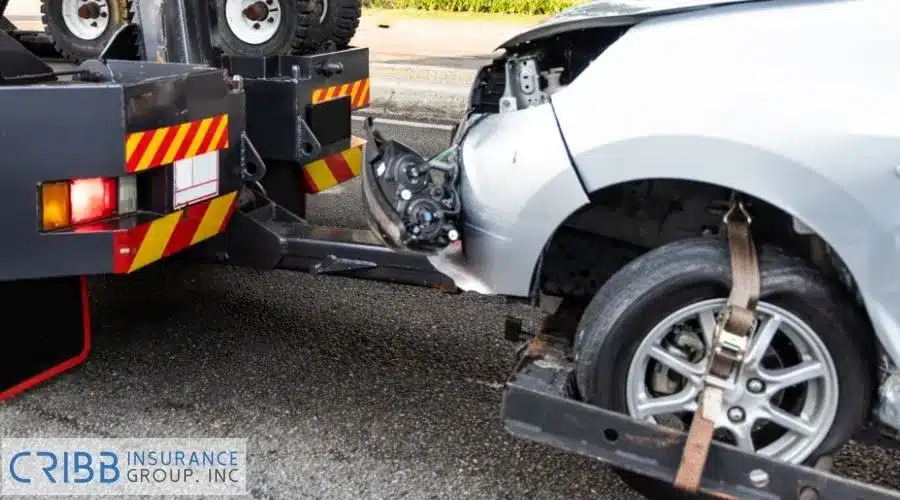
Accidents and Vehicle Damage Exclusions
Roadside assistance helps with mechanical failures and minor roadside emergencies, but it does not cover damages from accidents. If a vehicle is involved in a crash, standard auto insurance policies, not roadside assistance insurance, handle the repairs and claims. Here are key exclusions related to accidents and vehicle damage:
- Collision Towing: If a vehicle is damaged in an accident, roadside assistance does not cover towing. Instead, collision or comprehensive auto insurance must be used.
- Repair Costs: Roadside assistance does not cover any repairs related to accident damage. A separate insurance claim must be filed.
- Medical Expenses: Roadside assistance does not provide coverage for injuries or medical bills resulting from an accident.
Drivers should not rely on roadside assistance services for accident-related situations. Instead, they should contact their auto insurance provider to arrange towing and claim processing after a collision.
Roadside Assistance Coverage in Bentonville AR
Understanding what roadside assistance covers helps drivers in Bentonville, AR, choose the right plan for their needs. Roadside assistance insurance provides valuable protection for breakdowns, but it comes with service limitations, such as towing distance caps, annual call limits, and exclusions for accident-related damages. Whether you rely on insurance roadside assistance or a membership-based plan, knowing your coverage details ensures you are prepared for emergencies on the road.
At Cribb Insurance Group Inc, we help drivers in Bentonville, AR, find reliable roadside assistance coverage that fits their budget and driving habits. Comparing service options, understanding limitations, and choosing a provider with the right balance of coverage and cost will help you stay protected when unexpected breakdowns occur.
Frequently Asked Questions
Does roadside assistance cover rental cars?
Most roadside assistance insurance policies do not automatically cover rental cars. Coverage depends on the provider and the terms of the rental agreement. Some rental companies include roadside assistance as an add-on service, while others require drivers to rely on their roadside plans. If you frequently rent cars, check whether your insurance roadside assistance plan extends to rental vehicles or consider adding coverage through the rental agency.
Can I use roadside assistance for someone else’s car?
Roadside assistance coverage depends on whether it follows the vehicle or the driver. Some plans cover any car the policyholder is driving, while others only apply to the insured vehicle. Membership-based plans, such as AAA, often follow the driver, allowing assistance for any vehicle they are operating. Insurance-provided roadside assistance, like Progressive roadside assistance, usually covers only the vehicle listed on the policy.
What happens if I need roadside assistance in another state?
Most roadside assistance service plans offer nationwide coverage, but some providers have restrictions on service areas. Insurance roadside assistance from major providers generally covers all U.S. states, while smaller regional providers may limit coverage. If you frequently travel across state lines, confirm that your plan includes roadside assistance wherever you drive to avoid unexpected limitations.
How long does it take for roadside assistance to arrive?
Response times for roadside assistance insurance vary based on provider, location, and service demand. On average, roadside assistance arrives within 30 to 60 minutes, but delays can occur during severe weather, peak hours, or in rural areas. Some providers, including Progressive roadside assistance, offer apps or tracking systems to give estimated arrival times. Drivers in high-traffic areas or remote locations may experience longer wait times.
Does roadside assistance cover motorcycles and RVs?
Standard roadside assistance service typically covers passenger vehicles only. Motorcycles, RVs, and trailers may require separate roadside assistance plans. Some providers, like AAA and Good Sam, offer specialized roadside assistance packages for motorcycles and recreational vehicles. If you own a non-standard vehicle, check whether your insurance roadside assistance plan includes coverage or if you need to purchase a separate policy.
Get the Best Roadside Assistance Coverage Today
If you are looking for a roadside assistance insurance plan that meets your needs, Cribb Insurance Group Inc can help. We offer coverage options tailored for drivers in Bentonville, AR. Call (479) 273-0900 today to learn more about your options and ensure you have the protection you need on the road.





